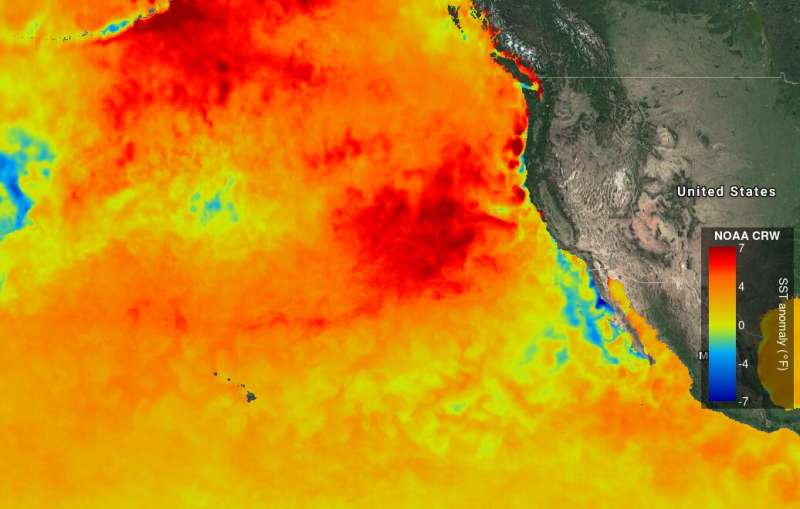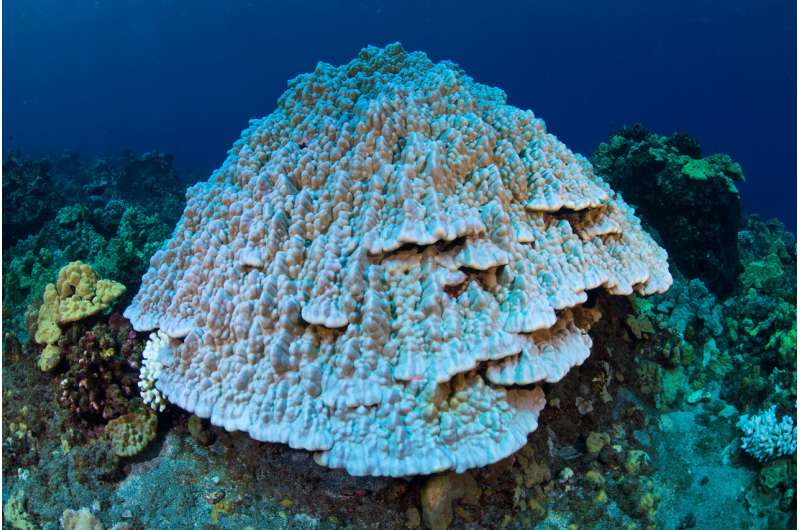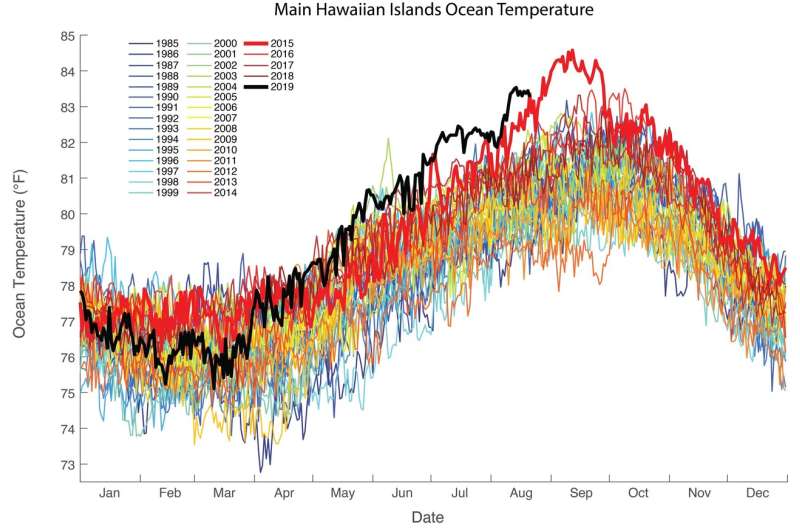ASU working to save Hawaiian coral reefs during onset of new ocean heatwave

July ended with the hottest recorded average temperature since people have been making daily readings. A huge chunk of Greenland has melted, Arctic seas have opened, and the diversity of life on Earth is threatened.
Now, the effects are spreading across the Hawaiian Islands, with some of the most unique and abundant life under peril due to a massive ocean heatwave that is approaching the region.
According to NOAA scientist Jamison Gove, "Ocean temperatures are extremely warm right now across Hawaii, about 3°F warmer than what we typically experience in mid-August. If the ocean continues to warm even further as projected, we are likely to witness severe and widespread coral bleaching across the Islands."
This event is coming a mere four years after the unprecedented bleaching event of 2015. Just as the Hawaiian coral reefs were showing remarkable resiliency and making a recovery, they are faced with yet another massive bleaching event.
Coral bleaching is a change from normal coloration of browns, yellows and greens to a nearly white color. This change occurs when corals are stressed by environmental changes, especially temperature increases. Although corals can recover from moderate levels of heat, if the heatwave is prolonged, they will die.
But scientists say that reducing secondary stress on corals during these ocean heatwaves can improve the chances of coral survival.

According to Division of Aquatic Resources (DAR) Administrator Brian Neilson, "We know this bleaching event is coming, and it's probably going to be worse than the one we experienced a couple of years ago, when West Hawaii experienced a 50% mortality rate and Maui experience 20-30% mortality rates on DAR fixed monitoring sites. We're asking for everyone's help in trying to be proactive, and minimize any additional stress put on coral."
As part of its sustainability commitment to help preserve life on Earth, ASU is leading the effort to help Hawaii save the reefs by providing real-time monitoring in support of DAR's efforts.
"The work that the team is doing here, in cooperation with DAR, is the first time that real-time monitoring of a bleaching event is being integrated with real-time management at a massive geographic scale," said Greg Asner, who directs the new ASU Center for Global Discovery and Conservation Science.
Their suite of technology, including the ASU Global Airborne Observatory and the ASU Planet satellite program, has extensively mapped the state of coral reef health before the warming event. Now, the team's 24/7 efforts are monitoring the warming ocean's impact on coral reefs through space satellite imaging, mapping from the air, and measurements on the ocean floor. The ASU team rapidly developed and launched a new website that boasts an enormous amount of hidden technology, including more than 100 Planet Inc. satellites, the world's first map of live corals from the ASU Global Airborne Observatory, advanced artificial intelligence, citizen and expert crowd sourcing from the field, and thousands of CPUs at ASU and in the Google Cloud.
"A ground-breaking combination of technologies, paired with enormously talented people in my Center at ASU are making this possible", says Asner.
The outputs of the technology suite can be viewed in real-time at http://hawaiicoral.org, a makeshift website launched overnight to get Hawaii's communities onboard.

"The sea surface temperature alert already went up, and this is the highest temperature ever recorded in Hawaii for this time of year," said Asner. "But bleaching does not automatically mean coral death, so there is still a chance to save some corals."
Asner mentions that what ultimately kills coral is macroalgae, which thrive and multiply with the higher temperatures, snuffing out corals and other ocean life.
DAR, NOAA and ASU are working together with Hawaii's residents and tourism industries on ways to reduce secondary stress on corals during the incoming ocean heatwave. They are asking ocean users to:
- Avoid touching the reef while diving, snorkeling or swimming;
- Do not stand or rest on corals;
- Use sunscreens with no oxybenzone or octinoxate;
- Boaters should use mooring buoys, or anchor only in sand areas and keep anchor chains off the reef;
- Fishers should reduce or stop their take of herbivores, such as parrotfish, surgeonfish, and sea urchins. Herbivores clear reefs of algae, which over-grow and kill corals during bleaching events;
- Take extra precaution to prevent contaminants from getting to the ocean like dirt from neighboring earth work, chemical pollution from fertilizers, and soaps and detergents getting to storm drains.
Together, through state agencies, ASU research, and the community, they may help stem the tide on coral bleaching. If it works, Hawaii could be a model for ways in which governments, scientists and communities can work together to mitigate the tragic impacts of climate change and ocean heatwaves.
Provided by Arizona State University



















